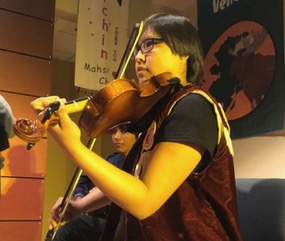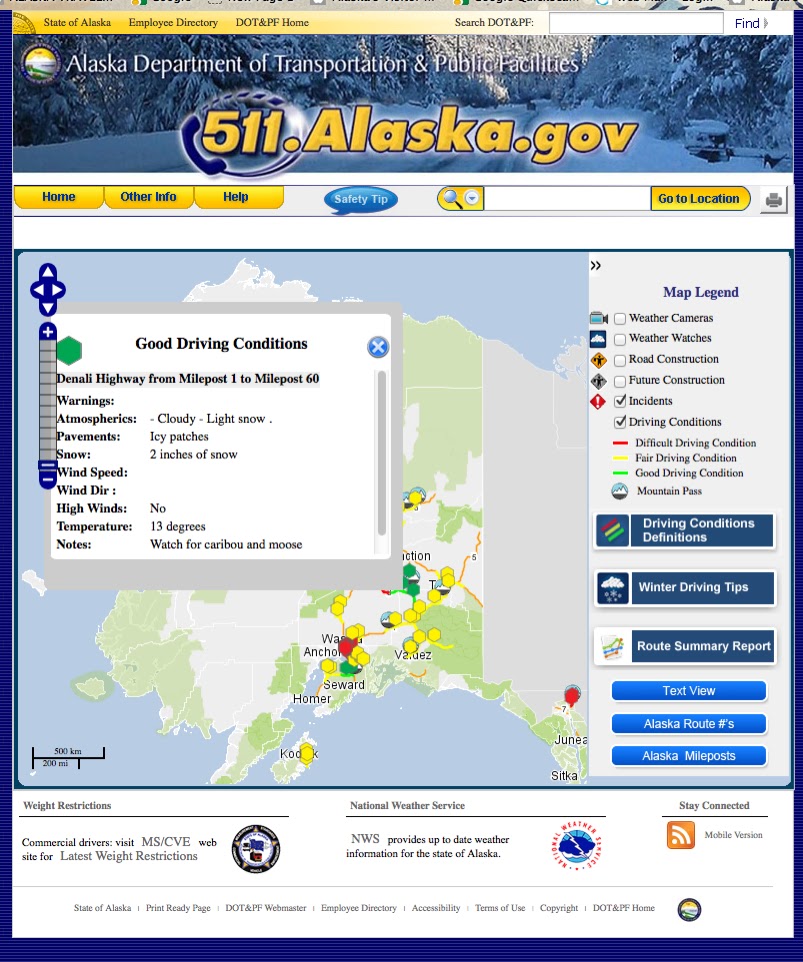Hudson's Bay Company Shuts Down, Leaving Behind A Fiddling Legacy In Native Alaska
Young Tanana-area dancers doing a Celtic (Scotch-Irish) Hudson's Bay-inspired jig to Athabascan fiddle tunes at the Morris Thompson Cult...

Young Tanana-area dancers doing a Celtic (Scotch-Irish) Hudson's Bay-inspired jig to Athabascan fiddle tunes at the Morris Thompson Cultural Center, Fairbanks, in July, 2018. (Photo, Country Journal)
Copper River Country Journal

Athabascan Fiddling Is A Celebrated Art Form Stemming From The Days Of Fur Trading Along The Great Northern Rivers
The Hudson's Bay Company, which got its start in 1670, and managed the fur trade across Canada, has gone bankrupt and closed down.
It was a cultural icon of the north.
 |
| Teenaged Athabascan fiddler in Fairbanks. Summer of 2018. (Photo, Country Journal) |
Hudson's Bay had a strong impact on current Athabascan art and culture. Including in the Copper Valley.
The fur company was 355 years old as it shuttered, and most recently had headquarters in Toronto and Ontario and in New York City. Its territory swept across the Northcountry, with operations in "First Nation" territories. In these villages, there was a yearly bringing of furs to trading posts to exchange for Western household goods and blankets.
The annual Fur Rendezvous in Anchorage is based on similar annual winter celebrations from when furs were brought into town in the winter from wilderness Alaska.
 |
| Young Athabascan fiddlers on stage at the University of Alaska, Fairbanks in the 1990s. (Photo by Copper River Country Journal) |
Athabascan fiddling is very similar to the music of the southern states in America, and spans (as did the Hudson's Bay Company) the northwestern part of the North American continent.
 |
| Young Athabascan fiddlers in midwinter Fairbanks event. (Photo to the Journal from the Morris Thompson Cultural Center) |
In Alaska, there was a Hudson's Bay outpost at Fort Yukon, 145 miles north of Fairbanks, where the Porcupine River meets the Yukon River. The Arctic Circle passes through Fort Yukon.
The legend of how fiddling was introduced in Alaska to Native people goes back nearly two hundred years, and the story is that a single French Canadian Hudson's Bay worker brought the first fiddle – or violin – to Fort Yukon.
 |
| Fiddling & guitar music at birthday potlatch in Gulkana Village for the late Fred Ewan in August, 2018. (Photo by Copper River Country Journal) |
Due to Alaska's isolation, a musical tradition developed on its own from the Hudson's Bay traders and local musicians who pulled together a robust blend of Scotch-Irish ("Celtic") music, French Canadian tunes, centuries' old songs, Native American influences, Klondike Gold Rush tunes, square dances, jigs and polkas, and – eventually – flat-out country and western songs people heard over the radio, including songs by Hank Williams and others.
Guitars have been added to the genre.
 |
| A young Frank Hobson II plays one of his grandfather's handmade fiddles in the May, 1990 Copper Valley Art & Talent Show in Glennallen. (Photo from the Copper River Country Journal archives) |
Athabascan fiddling is celebrated throughout the Interior of Alaska, as well as in the Copper Valley. A local craftsman, the late Frank Hobson, was known for making fine fiddles from local wood.
Every year there's an Athabascan Fiddle Festival in Fairbanks. But traditional fiddling is also popular in the Copper Valley and elsewhere, where village fiddlers from the north come to play at potlatches and festivities.
 |
| Fred Ewan, dancing to western-style Athabascan fiddle music in Gulkana at his birthday celebration in August, 2018. He passed away two years later, at the age of 103. (Photo, Country Journal) |
The late Fred Ewan, whose birthday was celebrated in August, was honored with a number of birthday celebrations as he moved past 100 years old. Fred Ewan was an avid lover of Athabascan fiddling and the dances that accompanied it, and river fiddlers came down to Gulkana to entertain the community for his parties.
 |
| Luke Maxim of the Copper Valley, playing fiddle on stage at the 1995 4th of July celebrations in Glennallen. (Photo by Country Journal from the archives) |



















